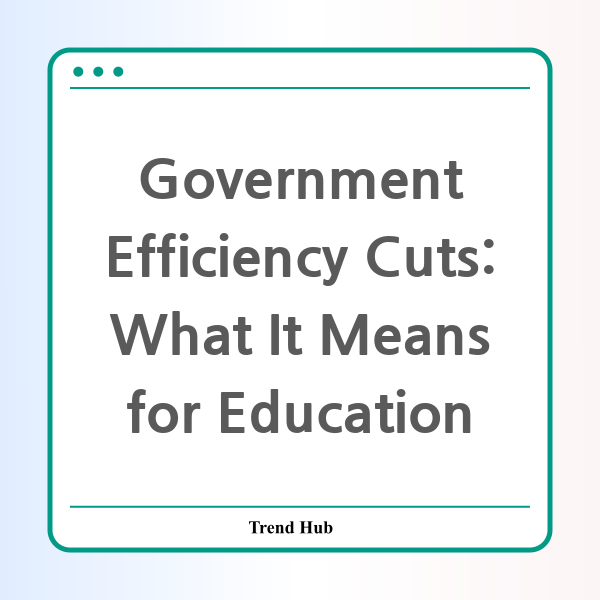* This website participates in the Amazon Affiliate Program and earns from qualifying purchases.

As the phrase "government efficiency" echoes throughout policy discussions, a troubling trend emerges, particularly within the U.S. education system. The recent significant cuts to the Institute of Education Sciences (IES), a critical research arm of the Department of Education, have raised many eyebrows. What does this mean for the future of educational research and, ultimately, for our students?
The IES has played a vital role in collecting and analyzing data that informs educational practices across the nation. Its work extends to understanding student achievement and effective teaching strategies. However, recent reports suggest that the Trump administration's Department of Government Efficiency (DOGE) is poised to halt most of IES's contracts, jeopardizing crucial research efforts.
Why should this matter? The data compiled by the IES assists educators, policymakers, and researchers in making informed decisions about teaching methodologies and student success. The impending cuts represent not merely a budgetary restructuring but a potential dismantling of the scientific understanding of education. Many contracts that have already been canceled were set to provide essential insights into various aspects of education, including:
- Student achievement trends
- Research-backed teaching practices
- Surveys regarding private schooling and homeschooling
- Career and technical education programs
During a recent meeting, IES employees expressed their distress over the sudden termination of contracts and the uncertain future of their work. As one employee poignantly noted, "What will this mean for our jobs?" This reflects a broader concern within the department that these cuts will not lead to increased efficiency but rather to a significant loss of valuable knowledge.
From a financial standpoint, the rationale for cutting these contracts is tied to potential savings. However, critics argue that the money already invested in these research programs renders the cuts economically short-sighted. One former commissioner at the National Center for Education Statistics stated that these actions represent "the destruction of knowing what works for kids."
Another alarming consequence of these cuts is their effect on the availability of educational data. Many decades of research data that the IES has gathered could become inaccessible as contracts are terminated. This loss poses significant challenges for future data collection efforts, impacting the ability to monitor educational progress and innovation directly.
While the National Assessment of Educational Progress (NAEP), also known as The Nation's Report Card, remains unaffected for now, the uncertainty of the IES's future looms large. Without continuous funding and support, our understanding of educational challenges and successes, particularly in areas affected by current events like the pandemic, could stagnate.
In conclusion, the cuts to educational research funding within the Department of Education raise essential questions about the balance between government efficiency and the need for informed decision-making in education. As we navigate these turbulent waters, we must advocate for research that supports our educators and students, ensuring their needs continue to be met through sound data and science-backed approaches.
As the government moves forward with its efficiency agenda, we must remember that education is not merely a budget line item but a crucial element of our societal fabric. What steps can we take to preserve the integrity of educational research in this shifting landscape?
* This website participates in the Amazon Affiliate Program and earns from qualifying purchases.